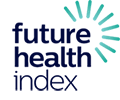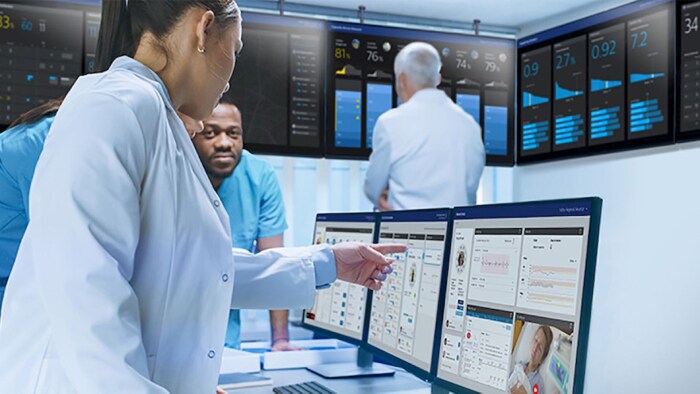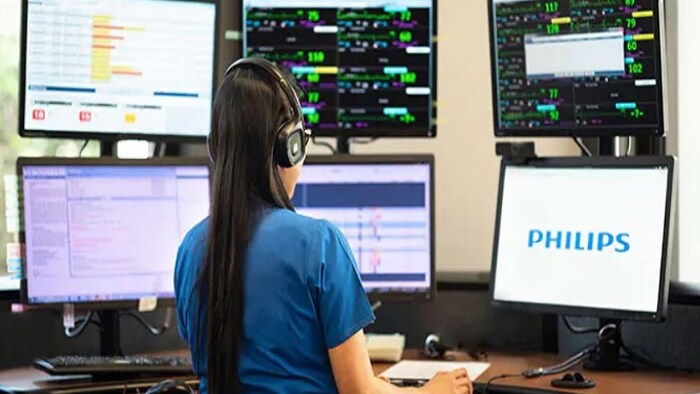Transforming Thailand’s Future Healthcare Delivery Through Remote Patient Monitoring


Apr 28, 2020 - reading time 8 mins
Country Manager, Philips Thailand Viroj Vithayaveroj is the Country Manager of Philips Thailand. He is also responsible for the strategic direction of Philips’ in Thailand to improve health and wellness through Philips’ innovations.

With the rapid advancement of Thailand’s healthcare industry, the country is emerging as a regional medical hub and fast becoming a popular destination for medical tourism around the world. While healthcare services in major cities like Bangkok continue to excel, Thailand faces rising healthcare challenges – chief among them the prospect of an aging population by 2025. Even as Thailand looks to provide the same excellence of healthcare beyond large cities to smaller cities, technologies such as telehealth and AI offer opportunities to enable better and more accessible healthcare, and reduce risks of staff exposure to infectious diseases such as COVID-19, while delivering high quality of care to patients.

Southeast Asia has been a destination for medical tourists from around the world. Countries in this region have been competing to be one of top-of-mind choices for people seeking treatment. Thailand is one of the leading destinations offering good hospitality, high quality of healthcare professionals (HCPs) and advanced medical technology. It is no surprise that many leading private hospitals in Thailand, especially those located in the area of tourist attractions such as Phuket, Pattaya and Bangkok, provide facilities to serve these target groups. Despite the success, there is still a shortage of healthcare resources such as healthcare professionals, hospital beds as well as medical equipment. This can be seen in the doctor-population ratio. For Thailand, it is 1:1771 (in 2018)1 compared to Singapore’s 1:4072. Even with the number of hospital bed per population in Thailand is 1:4321, the country is still able to deliver good service to foreigners because many HCPs opt to work in Bangkok and other large cities. Thailand is an aging society and the birth rate is one of the lowest in the world. It is expected that Thailand will be the third country in Asia after Japan and Singapore with a large proportion of aged people. It is estimated that over 20% of Thai population will be over 60 years old by 20253. This means that the issue of shortage resource in healthcare might be exacerbated in the future. Last but not the least, the number of non-communicable disease patients is also increasing year-on-year. Considering all the factors, Thailand needs to focus on health technology that can help HCPs handle the overwhelming patient load.
Delivering care beyond Thailand’s major cities
As mentioned, most HCPs live in Bangkok and other large cities in Thailand. Therefore, they will be able to support doctors or nurses in the smaller cities to handle the patient cases if they have Internet connectivity and other communications technology. One solution to these geographical challenges is today’s technological advancements. There is a ripe opportunity for the adoption of telehealth – where healthcare is provided remotely through telecommunications networks through video consultations or mobile platforms. While there is growing awareness of telehealth’s potential to improve healthcare access and availability, Philips’ 2019 Future Health Index (FHI) global study found that telehealth has yet to become a common part of work for healthcare professionals’ day-to-day work – with 39% saying they do not currently use telehealth in their practice or hospital. Moreover, the FHI also revealed that the top reasons that hinder patients from seeing a healthcare professional – lack of a specialist in their area and difficulty of or inability to schedule an appointment – areas where telehealth can be the most effective. Telehealth can create more positive impact on the patient experience and outcomes given the dispersed nature of Thailand’s population, where those living in remote communities need to travel a significant distance to the nearest clinic or hospital. This seems to be simple and easy, but actually, quality of technology for transferring patients’ information to the specialists in big hospitals is crucial because of consulting doctors have to be reached any time. In the meantime, quality data like texts, graphs and images together with historical data from the small hospitals must be sent seamlessly and fast enough. This does not only involve adequate quality of infrastructure among these hospitals, but also the level of technology that can make the consulting doctors get accurate and timely data so that they can make correct diagnosis and deliver precise clinical advice. This is where artificial intelligence (AI) comes to play to help all stakeholders render better and faster service to handle medical cases. Telehealth: alleviating workloads and reducing risks of staff exposure to COVID-19 Technology can support ease the workloads for HCPs. However, with the unprecedented COVID-19 pandemic, there is another aspect where innovation and technology can be used to support the provision of healthcare. During the battle to curb the virus, in Thailand alone, 97 HCPs have already been infected while doing their jobs. Moving forward, technological innovation must not only relieve the burdens for HCPs, it must also protect them as well. This process has ready started with the advent of COVID-19. A few private hospitals have initiated talks on tele-ICU with us. Before COVID-19, the same hospitals were only interested in Hospital-to-Home solutions. What is tele-ICU? In its simplest form, a tele-ICU enables off-site clinicians to interact with bedside staff to consult on patient care. One centralized care team can manage a large number of geographically dispersed ICU locations to exchange health information electronically, in real time. A tele-ICU, like Philips eICU, is a supplement – not a replacement – to the bedside team, offering support to increasingly scarce clinical resources. Philips is a leading health technology company focused on improving people's health and enabling better outcomes across the health continuum from healthy living and prevention, to diagnosis, treatment and home care. By leveraging advanced technology and deep clinical and consumer insights, this enables us to deliver integrated solutions for healthcare organizations. Philips has the depth of perspective across hospital and home needed to break the boundaries standing in the way of organizing healthcare around the patient. Through co-collaboration with stakeholders, we design innovations to seamlessly bring together people, data and technology to help our customers achieve their Quadruple Aim: improving the patient experience of care (including quality and satisfaction), improving the health of individuals and populations, improving the work life of health professionals, and reducing the per capita cost of healthcare.



